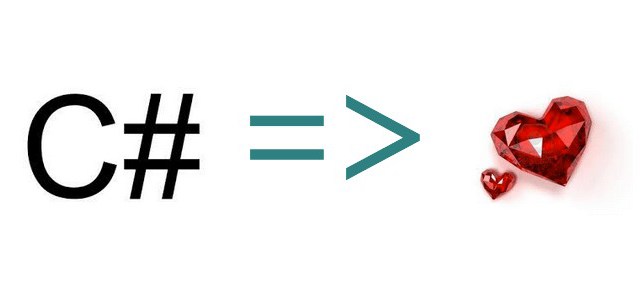 Web Front-end
Web Front-end
 JS Tutorial
JS Tutorial
 How to use implicit conversion? Summary of implicit conversion instance usage
How to use implicit conversion? Summary of implicit conversion instance usage
How to use implicit conversion? Summary of implicit conversion instance usage
JavaScript data types are divided into six types, namely null, undefined, boolean, string, number, and object. object is a reference type, and the other five are basic types or primitive types. We can use the typeof method to print out which type something belongs to. To compare variables of different types, you must first convert the type, which is called type conversion. Type conversion is also called implicit conversion. Implicit conversions usually occur with the operators addition, subtraction, multiplication, division, equals, and less than, greater than, etc. . typeof '11' //string typeof(11) //number '11' < 4 //falseBasic type conversion Let’s talk about addition, subtraction, multiplication and division first: 1. Add numbers to strings, and the numbers will be converted into words
1. Implicit type how to use? Summary of implicit type instance usage

##Introduction: JavaScript data types are divided into six types, namely null ,undefined,boolean,string,number,object. object is a reference type, and the other five are basic types or primitive types. We can use the typeof method to print out which type something belongs to. To compare variables of different types, you must first convert the type, which is called type conversion. Type conversion is also called implicit conversion. Implicit conversions usually occur with the operators addition, subtraction, multiplication, division, equals, and less than, greater than, etc. . typeof &...
2. Front-end advanced (8): In-depth currying of functions

Introduction: Currying is a relatively advanced application of functions, and it is not easy to understand it. So I've been thinking about how I should express myself more to make it easier for everyone to understand. After thinking about it for a long time, I decided to put aside the concept of currying and add two important but easily overlooked knowledge points. 1. Supplementary knowledge points about implicit conversion of functions. As a weakly typed language, JavaScript’s implicit conversion is very flexible and interesting. When we do not have a deep understanding of implicit conversions, we may be confused by the results of some operations, such as 4 + true = 5. When...
3. A brief discussion on implicit type conversion in JavaScript

Introduction: JavaScript data types are divided into six types, namely null, undefined, boolean, string, number, and object. object is a reference type, and the other five are basic types or primitive types. We can use the typeof method to print out which type something belongs to. To compare variables of different types, you must first convert the type, which is called type conversion. Type conversion is also called implicit conversion. Implicit conversions usually occur with the operators addition, subtraction, multiplication, division, equals, and less than, greater than, etc. . typeof '11' //string ty..
4. C# implicit and explicit type conversion

Introduction: Regarding implicit conversion and explicit conversion, every language has them, and C# is certainly no exception. Commonly used situations, one is when writing arithmetic expressions, the overall data type must be consistent and the calculation accurate. For example, if there is a variable a of type int, but it is obtained by addition, subtraction, multiplication and division, then in the operation You need to consider using explicit conversion. The division operation needs to be converted to float or double, and then the result is forced to be converted to int. Another is that when passing parameters, you need to pay attention to which ones require explicit conversion, or you should also pay attention to the type when assigning values to a collection. The problem.
5. C# Learning Diary 16----Implicit conversion specific use cases

Introduction: After the previous study of the basic data types in C#, the basic data types in C# are almost introduced. Next, let’s learn about the mutual conversion between types. Type conversion in C# can be divided into 2 categories: Implicit Formula conversion and explicit conversion.

简介:类型之间的转换可以分为隐式转换与显式转换,如int类型可直接转换为long类型。

简介:Javascript是web前端开发的必学技术,今天和大家分享的就是javascript的基础知识隐式转换,希望可以帮助大家更好的学习。 转换成布尔类型假 undefined->falSe null->falSe 数值型0或0.0或NaN->falSe 字符串长度为0->falSe

简介:如果是有这样一段程序的话,你永远无法知道x的值到底是多少,因为这句赋值语句x=array[d+1];根本不会执行。原因在哪?经过调试发现程序执行到if语句进行判断完之后,直接跳过下面一条语句的执行
9. js中的隐式转换
简介:js中的隐式转换
简介:PHP 中的 == 和“隐式转换”
【相关问答推荐】:
arguments - C++ const 形参和实参的类型问题
javascript - js 大于> 运算隐式转换用的是parseFloat还是Number?
JavaScript为什么console.log ([] == ![]) 结果为true?
The above is the detailed content of How to use implicit conversion? Summary of implicit conversion instance usage. For more information, please follow other related articles on the PHP Chinese website!

Hot AI Tools

Undresser.AI Undress
AI-powered app for creating realistic nude photos

AI Clothes Remover
Online AI tool for removing clothes from photos.

Undress AI Tool
Undress images for free

Clothoff.io
AI clothes remover

Video Face Swap
Swap faces in any video effortlessly with our completely free AI face swap tool!

Hot Article

Hot Tools

Notepad++7.3.1
Easy-to-use and free code editor

SublimeText3 Chinese version
Chinese version, very easy to use

Zend Studio 13.0.1
Powerful PHP integrated development environment

Dreamweaver CS6
Visual web development tools

SublimeText3 Mac version
God-level code editing software (SublimeText3)

Hot Topics
 1662
1662
 14
14
 1419
1419
 52
52
 1312
1312
 25
25
 1262
1262
 29
29
 1235
1235
 24
24
 Demystifying JavaScript: What It Does and Why It Matters
Apr 09, 2025 am 12:07 AM
Demystifying JavaScript: What It Does and Why It Matters
Apr 09, 2025 am 12:07 AM
JavaScript is the cornerstone of modern web development, and its main functions include event-driven programming, dynamic content generation and asynchronous programming. 1) Event-driven programming allows web pages to change dynamically according to user operations. 2) Dynamic content generation allows page content to be adjusted according to conditions. 3) Asynchronous programming ensures that the user interface is not blocked. JavaScript is widely used in web interaction, single-page application and server-side development, greatly improving the flexibility of user experience and cross-platform development.
 The Evolution of JavaScript: Current Trends and Future Prospects
Apr 10, 2025 am 09:33 AM
The Evolution of JavaScript: Current Trends and Future Prospects
Apr 10, 2025 am 09:33 AM
The latest trends in JavaScript include the rise of TypeScript, the popularity of modern frameworks and libraries, and the application of WebAssembly. Future prospects cover more powerful type systems, the development of server-side JavaScript, the expansion of artificial intelligence and machine learning, and the potential of IoT and edge computing.
 JavaScript Engines: Comparing Implementations
Apr 13, 2025 am 12:05 AM
JavaScript Engines: Comparing Implementations
Apr 13, 2025 am 12:05 AM
Different JavaScript engines have different effects when parsing and executing JavaScript code, because the implementation principles and optimization strategies of each engine differ. 1. Lexical analysis: convert source code into lexical unit. 2. Grammar analysis: Generate an abstract syntax tree. 3. Optimization and compilation: Generate machine code through the JIT compiler. 4. Execute: Run the machine code. V8 engine optimizes through instant compilation and hidden class, SpiderMonkey uses a type inference system, resulting in different performance performance on the same code.
 JavaScript: Exploring the Versatility of a Web Language
Apr 11, 2025 am 12:01 AM
JavaScript: Exploring the Versatility of a Web Language
Apr 11, 2025 am 12:01 AM
JavaScript is the core language of modern web development and is widely used for its diversity and flexibility. 1) Front-end development: build dynamic web pages and single-page applications through DOM operations and modern frameworks (such as React, Vue.js, Angular). 2) Server-side development: Node.js uses a non-blocking I/O model to handle high concurrency and real-time applications. 3) Mobile and desktop application development: cross-platform development is realized through ReactNative and Electron to improve development efficiency.
 Python vs. JavaScript: The Learning Curve and Ease of Use
Apr 16, 2025 am 12:12 AM
Python vs. JavaScript: The Learning Curve and Ease of Use
Apr 16, 2025 am 12:12 AM
Python is more suitable for beginners, with a smooth learning curve and concise syntax; JavaScript is suitable for front-end development, with a steep learning curve and flexible syntax. 1. Python syntax is intuitive and suitable for data science and back-end development. 2. JavaScript is flexible and widely used in front-end and server-side programming.
 How to Build a Multi-Tenant SaaS Application with Next.js (Frontend Integration)
Apr 11, 2025 am 08:22 AM
How to Build a Multi-Tenant SaaS Application with Next.js (Frontend Integration)
Apr 11, 2025 am 08:22 AM
This article demonstrates frontend integration with a backend secured by Permit, building a functional EdTech SaaS application using Next.js. The frontend fetches user permissions to control UI visibility and ensures API requests adhere to role-base
 From C/C to JavaScript: How It All Works
Apr 14, 2025 am 12:05 AM
From C/C to JavaScript: How It All Works
Apr 14, 2025 am 12:05 AM
The shift from C/C to JavaScript requires adapting to dynamic typing, garbage collection and asynchronous programming. 1) C/C is a statically typed language that requires manual memory management, while JavaScript is dynamically typed and garbage collection is automatically processed. 2) C/C needs to be compiled into machine code, while JavaScript is an interpreted language. 3) JavaScript introduces concepts such as closures, prototype chains and Promise, which enhances flexibility and asynchronous programming capabilities.
 Building a Multi-Tenant SaaS Application with Next.js (Backend Integration)
Apr 11, 2025 am 08:23 AM
Building a Multi-Tenant SaaS Application with Next.js (Backend Integration)
Apr 11, 2025 am 08:23 AM
I built a functional multi-tenant SaaS application (an EdTech app) with your everyday tech tool and you can do the same. First, what’s a multi-tenant SaaS application? Multi-tenant SaaS applications let you serve multiple customers from a sing



